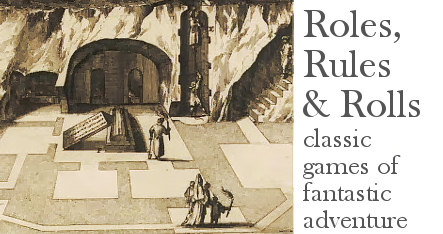Having availed myself of the free download of Gygax and Mentzer's Temple of Elemental Evil last week, I was immediately stopped dead in my tracks by this ... well ... astounding opening salvo:
But after the initial surge of mockery I stopped. Where have we heard this kind of voice before? Let's see...
In the notorious video that came packaged in TSR's Dragonstrike boardgame...
And wherever people lovingly, or not-so-lovingly, mock the D&D experience ...
Indeed, there is magic in the incantatory repetition of stock phrases - a magic that, from the outside, looks like utter tomfoolery. But a sure sign of total commitment to some world-within-a-world is that you feel free to make these literary gaffes, unselfconsciously, encouraging the listener or reader to join you in immersion.
Think about the kinds of statements that sportscasters make in the heat of the moment, the kind of verbal fluff they put in there to fill time and keep interest going but that don't stand up too well on reconsideration: "The game will be won by the side that scores the most points" and so forth.
There's even a term for this kind of material in storytelling: the oral-formulaic, epithets and stock phrases intended to keep bards in preliterate societies on point and on the beat. It has a transporting effect when recited as poetry, but put it on the printed page and it seems redundant and quaint, as Miguel de Cervantes observed in Don Quixote:
And of them all he considered none so good as the words of the famous Feliciano de Silva. For his brilliant style and those complicated sentences seemed to him very pearls, especially when he came upon those love-passages and challenges frequently written in the manner of: 'The reason for the unreason with which you treat my reason, so weakens my reason that with reason I complain of your beauty'; and also when he read: 'The high heavens that with their stars divinely fortify you in your divinity and make you deserving of the desert that your greatness deserves.'The danger in this kind of language and this kind of transportation is of being uncool - losing self-possession and becoming lost in the fantasy world, looking a fool to someone who is not in on the game.
With this in hand we can understand why the Dragonstrike video is there in the game to begin. After all, it teaches no rules; it does not set the atmosphere for the story, so much as tell a version of it. If it exists to promote the game, packaging it inside the box is surely a bad move. No, it is there to advertise the fundamental uncoolness of D&D: the FUDD. Because losing your cool, one way or another, can be intensely fun.
The hammy acting and amateurish effects in that video are not just products of a budget limitation. The High Gygaxian prose is not just a stylistic affectation in need of an editor. Both serve to advertise the FUDD, much as Corman Henley has observed that the risible features of e-mail scams work to deter attention from people who would not fall for them anyway.
Once you understand and accept the FUDD, then many of the arguments and stylistic poses in modern roleplaying take on new meaning. Like pearl around an irritant, a thick layer of defenses has grown around the raw, pulsing shame of the FUDD, often becoming themselves tainted and identified with the uncoolness of the game. Otherwise reasonable people are driven to make statements like "D&D is not a roleplaying game" or dress up their games in cooled-down mid-20th century iconic graphics in their desperation to stave off the FUDD. I'll unpack these defenses more, in the coming days.
"D&D is uncool" - it's a statement as obvious as the nose on your face, yet like your nose, you're rarely aware of it. But what is uncool, or cool for that matter? Dare you follow along, as I spin a tale of how cool evolved - how, over the long years, it made the transformation from a tool of resistance to a tool of repression? For alas, the tale is long and I have not the time or space to tell it all in one go. Instead, gentle reader, stay your impatience until the next installation of our faithful web-log, and time indeed will tell whether or not the tale convinces you!
Excelsior!







